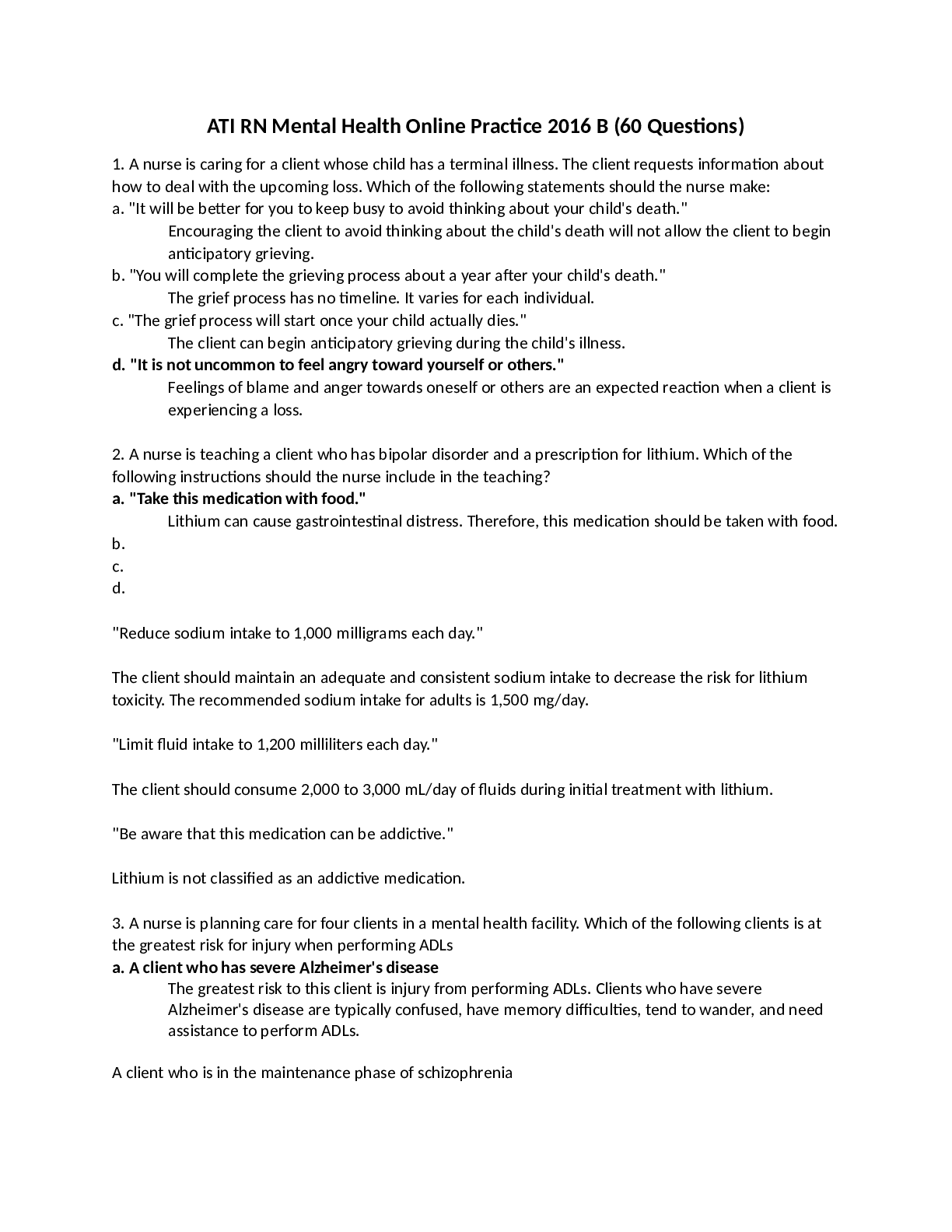SCIENCE 101 > EXAM > SCIN 138 Week 7 Exam - Questions and Answers( Complete Solution) (All)
SCIN 138 Week 7 Exam - Questions and Answers( Complete Solution)
Document Content and Description Below
Week 7 Exam (timed and single access) Return to Assessment List Part 1 of 4 - 44.0/ 48.0 Points Question 1 of 25 4.0/ 4.0 Points Evidence of recent climate change is found in _____. A. dec... reased crop yields B. all of the above C. reduction of sea ice D. ocean acidification Question 2 of 25 0.0/ 4.0 Points Data from the past 100 years (years 1900 - 2000 average) indicates that global temperatures have increased approximately _____ °C: A. 0.1 B. 0.2 C. 0.5 D. 1.2 E. 1.5 Question 3 of 25 4.0/ 4.0 Points The most probable cause of anthropogenic warming in the foreseeable future is the increase in _____. A. carbon dioxide B. chlorofluorocarbons C. sunlight D. ozone E. chlorine oxides Question 4 of 25 4.0/ 4.0 Points The process by which increased levels of CO2 in the atmosphere lead to enhanced growth of vegetation, which then removes CO2 from the atmosphere through photosynthesis is termed a _____. A. positive feedback B. reservoir C. Milankovitch Cycle D. sink E. negative feedback Question 5 of 25 4.0/ 4.0 Points The radiative balance between incoming and outgoing energy is moderated by the _____. A. climate B. global warming C. weather D. atmosphere E. anthroposphere Question 6 of 25 4.0/ 4.0 Points According to a 2004 study published in the prestigious journal of Science, _____ percentage of climate scientists agree that warming is from human activities. A. 97% B. 5% C. 57% D. 75% Question 7 of 25 4.0/ 4.0 Points _____ in the atmosphere scatter incoming solar radiation, resulting in the cooling of the planet. A. albedos B. radiatively active gasses C. aerosols D. ozones E. All of the aforementioned. Question 8 of 25 4.0/ 4.0 Points To distinguish between weather and climate, many scientists use a/an _______year average of data. A. 30 B. one C. 100 D. 10 E. 50 Question 9 of 25 4.0/ 4.0 Points Which of the following is NOT a likely consequence of enhanced global warming? A. heat waves B. flooding of islands C. enlarged ozone hole D. increased droughts E. stronger storms Feedback:enlarged ozone hole Question 10 of 25 4.0/ 4.0 Points Which of the following does NOT have a known effect on Earth's global climate? A. Earth-Moon tidal gravity B. subduction C. volcanoes D. plants E. greenhouse effect Question 11 of 25 4.0/ 4.0 Points Which of the following is NOT a likely consequence of enhanced global warming? A. stronger storms B. increased droughts C. enlarged ozone hole D. flooding of islands E. heat waves Feedback:enlarged ozone hole Question 12 of 25 4.0/ 4.0 Points Which is the most abundant of the naturally occurring greenhouse gases? A. carbon dioxide B. ozone C. methane D. water vapor E. nitrous oxide Part 2 of 4 - Deserts 24.0/ 24.0 Points Question 13 of 25 4.0/ 4.0 Points Which desert landscape sequence is in the proper order from young to old? A. Alluvial Fan > Bajada > Inselberg B. Bajada > Alluvial Fan > Inselberg C. Alluvial Fan > Inselberg > Bajada D. Inselberg > Bajada > Alluvial Fan E. Inselberg > Alluvial Fan > Bajada Question 14 of 25 4.0/ 4.0 Points Which of the following is NOT a type of desert? A. Polar B. tropical C. trade wind D. rain shadow Feedback:grassland Question 15 of 25 4.0/ 4.0 Points Why does desertification create even more desert in a positive feedback loop? A. Plants help create wind patterns, and they stop when arid conditions occur B. Rocks absorb more solar energy than plants, increasing heat C. Drying lakes create dust which amplify and trap solar energy D. More open spaces absorb even more solar energy, increasing heat E. Arid conditions kill plants and make soil less able to absorb moisture Question 16 of 25 4.0/ 4.0 Points Which of these desert landforms would most likely be associated with salt flats? A. Barchan B. Inselberg C. Arroyo D. Ephemeral stream E. Playa Question 17 of 25 4.0/ 4.0 Points Which of the following is formed from a natural version of sand blasting? A. Loess B. Desert varnish C. Blowout D. Yardang Question 18 of 25 4.0/ 4.0 Points The term _____ refers to wind-related forces. A. desertification B. suspension C. saltation D. aeolian Feedback:eolian Part 3 of 4 - Glaciers 24.0/ 24.0 Points Question 19 of 25 4.0/ 4.0 Points What is the main cause of the glacial cycles during the Quaternary Ice Age? A. Carbon Dioxide Cycles B. Wilson Cycles C. Milankovitch Cycles D. Tectonic Cycles Question 20 of 25 4.0/ 4.0 Points In a cross-sectional view of a glacier, where does the ice actually flow internally (ductile deformation)? A. The top 100 feet B. In the area with the largest crevasses C. The upper 500 feet or less than 100 kilopascals D. The lower part of the glacier where stress exceeds 100 kilopascals Question 21 of 25 4.0/ 4.0 Points When was the peak of the last glaciation? 26,5000 to 19,000 years ago 323 to 300 million years ago 420,000 years ago ~2.5 billion years ago A. 10,000 to 12,000 years ago B. 26,5000 to 19,000 years ago C. 323 to 300 million years ago D. 420,000 years ago Question 22 of 25 4.0/ 4.0 Points In the glacial ice budget, a zone of snow accumulation is balanced by a zone of _____. A. sublimation B. exhalation C. ablation D. abrasion Question 23 of 25 4.0/ 4.0 Points When a glacier “advances”, this means ________. A. The terminus of the glacier is moving forward; the glacier is growing B. The glacier is calving into the ocean, where pieces of ice are becoming icebergs C. It is gaining snow as fast as it is losing it; the glacier is not shrinking D. It is flowing downhill towards the end of the glacier Feedback:"Sometimes ice at the bottom of a glacier slides across its bed (the rock or sediment on which the glacier rests). This is called basal sliding." p. 411 Question 24 of 25 4.0/ 4.0 Points The classic shape of a glacial valley is _____. A. very narrow B. V-shaped C. terraced D. U-shaped Part 4 of 4 - Week 7 Lesson Questions 4.0/ 4.0 Points Question 25 of 25 4.0/ 4.0 Points A moraine is: A. Formed only when a glacier advances. B. Particles transported and deposited by water. C. A pile of angular, poorly sorted sediment. D. A pile of well sorted, well-rounded particles. Feedback:Lesson 7 [Show More]
Last updated: 1 year ago
Preview 1 out of 22 pages
Instant download
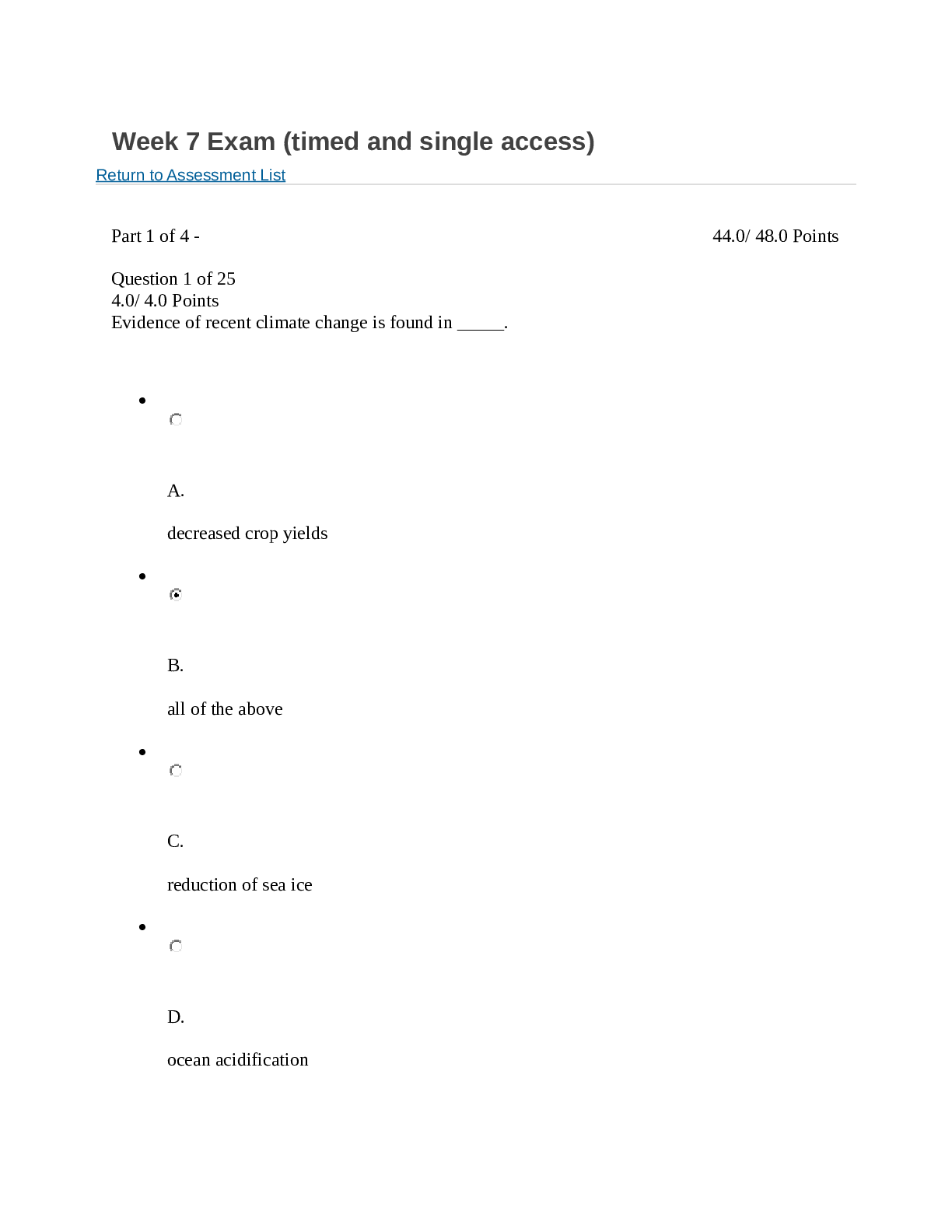
Buy this document to get the full access instantly
Instant Download Access after purchase
Add to cartInstant download
Reviews( 0 )
Document information
Connected school, study & course
About the document
Uploaded On
Aug 14, 2021
Number of pages
22
Written in
Additional information
This document has been written for:
Uploaded
Aug 14, 2021
Downloads
0
Views
44

.png)
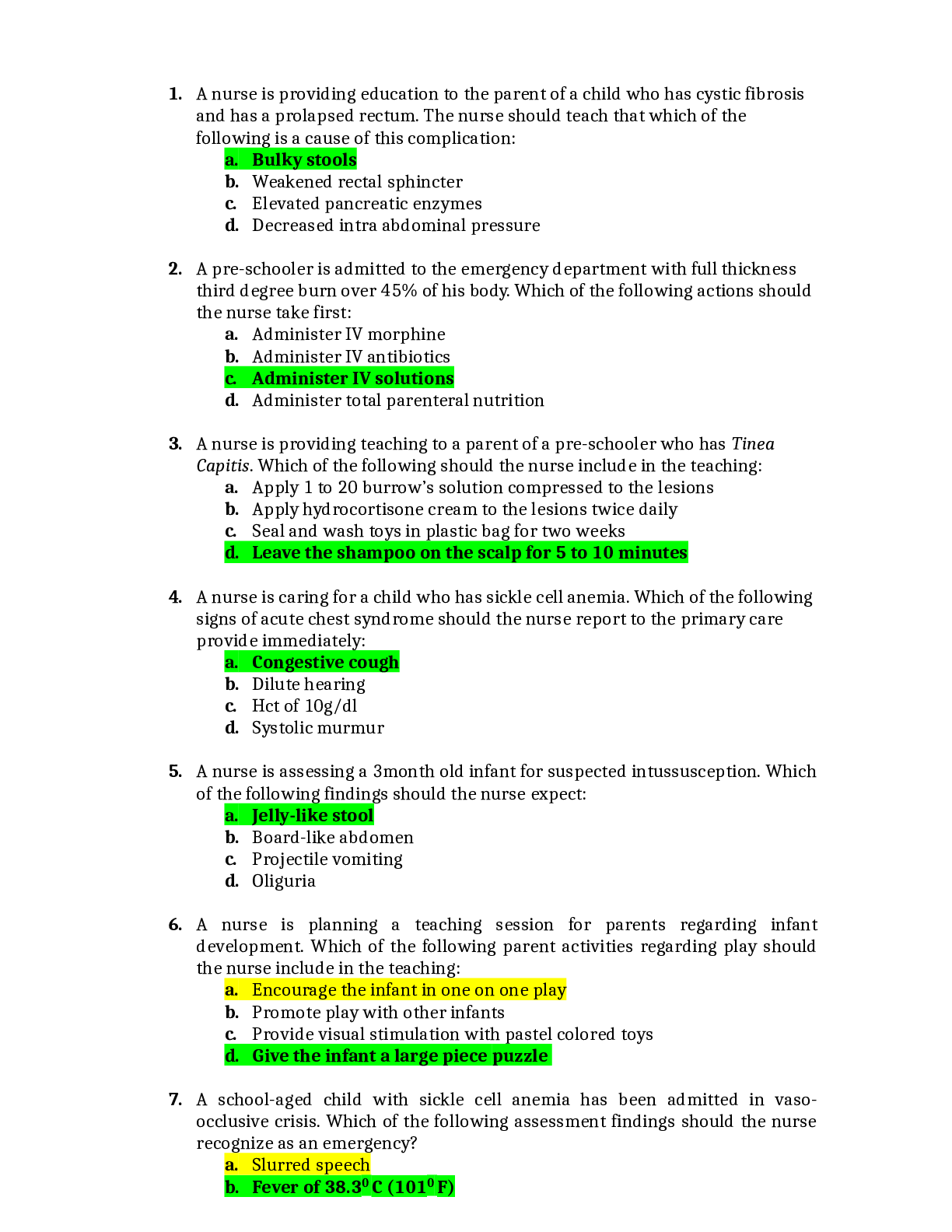
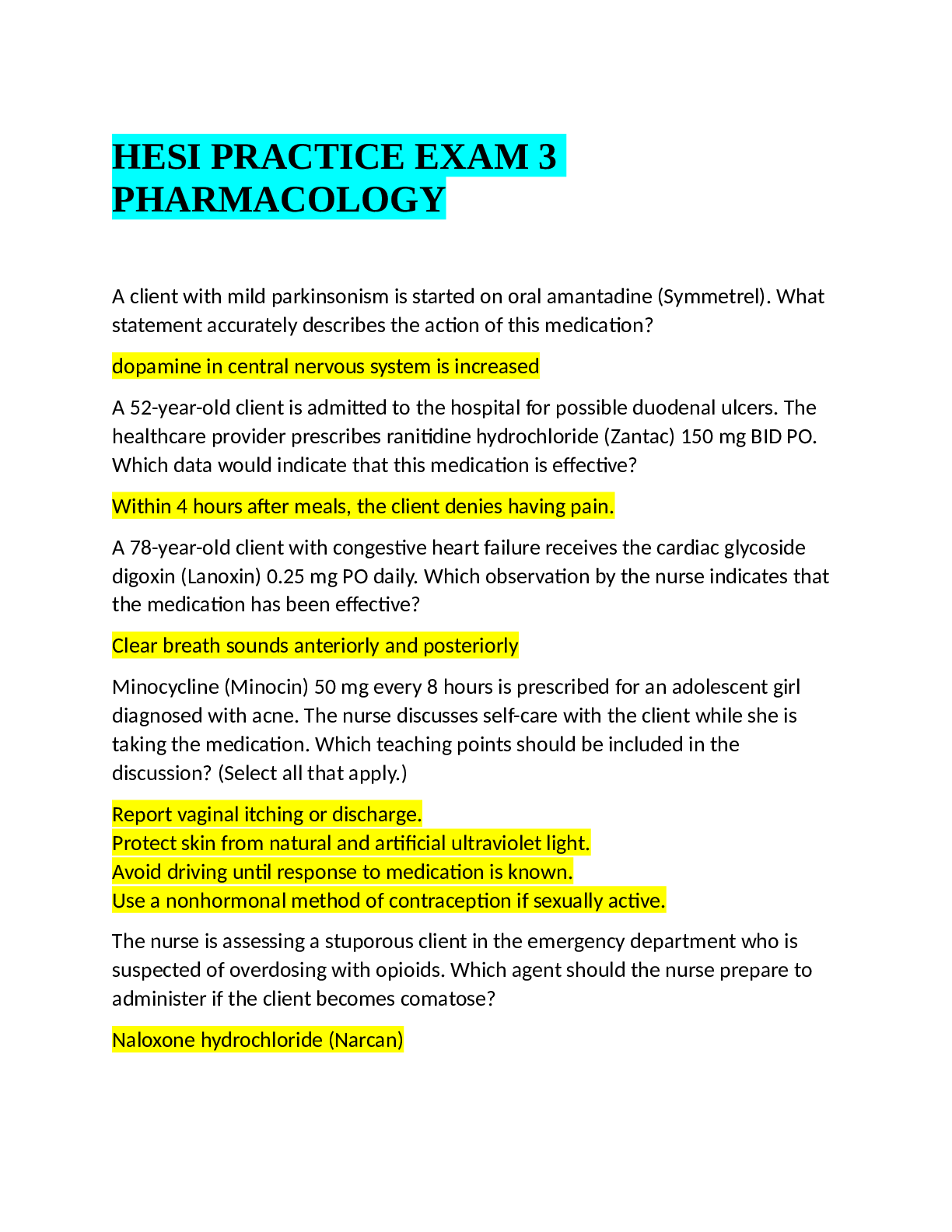

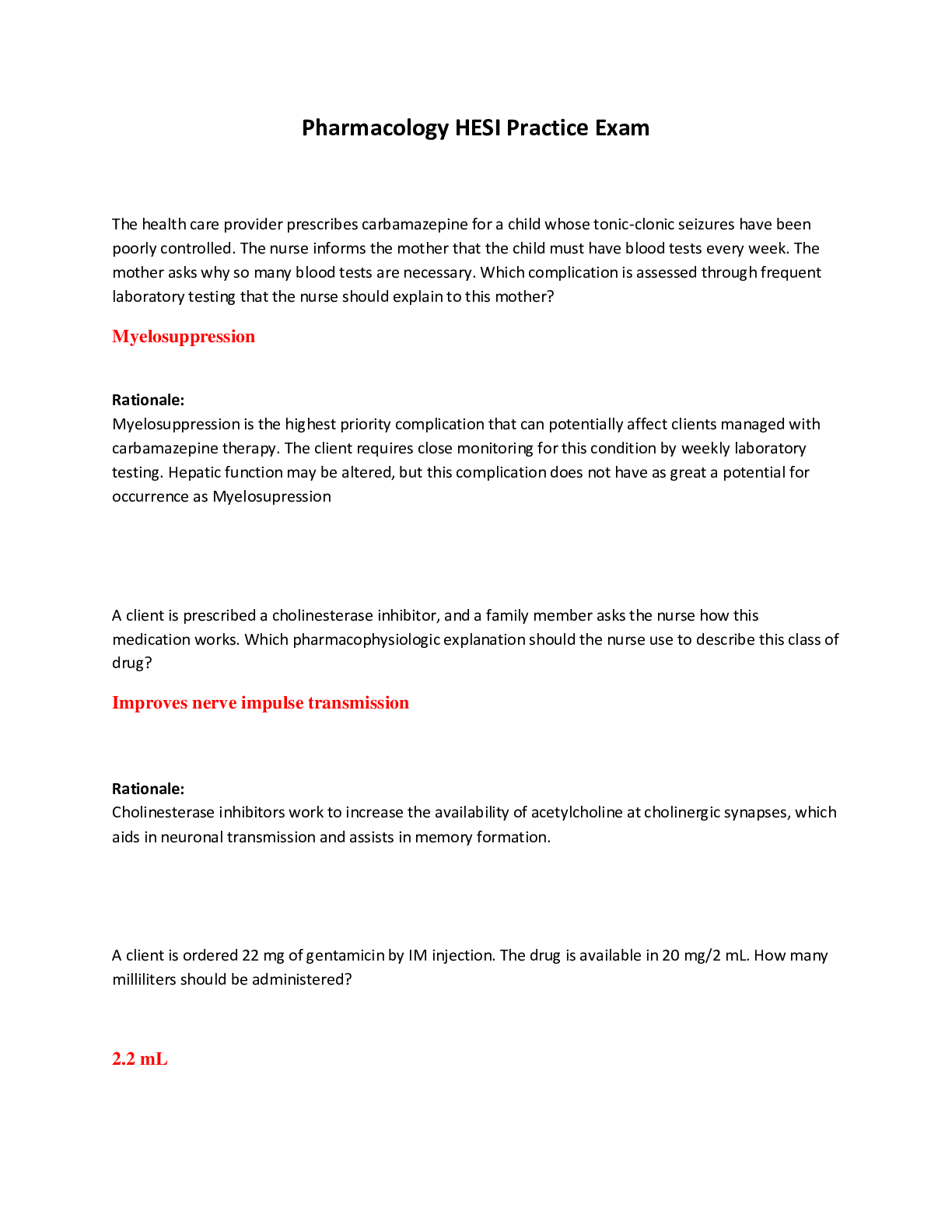
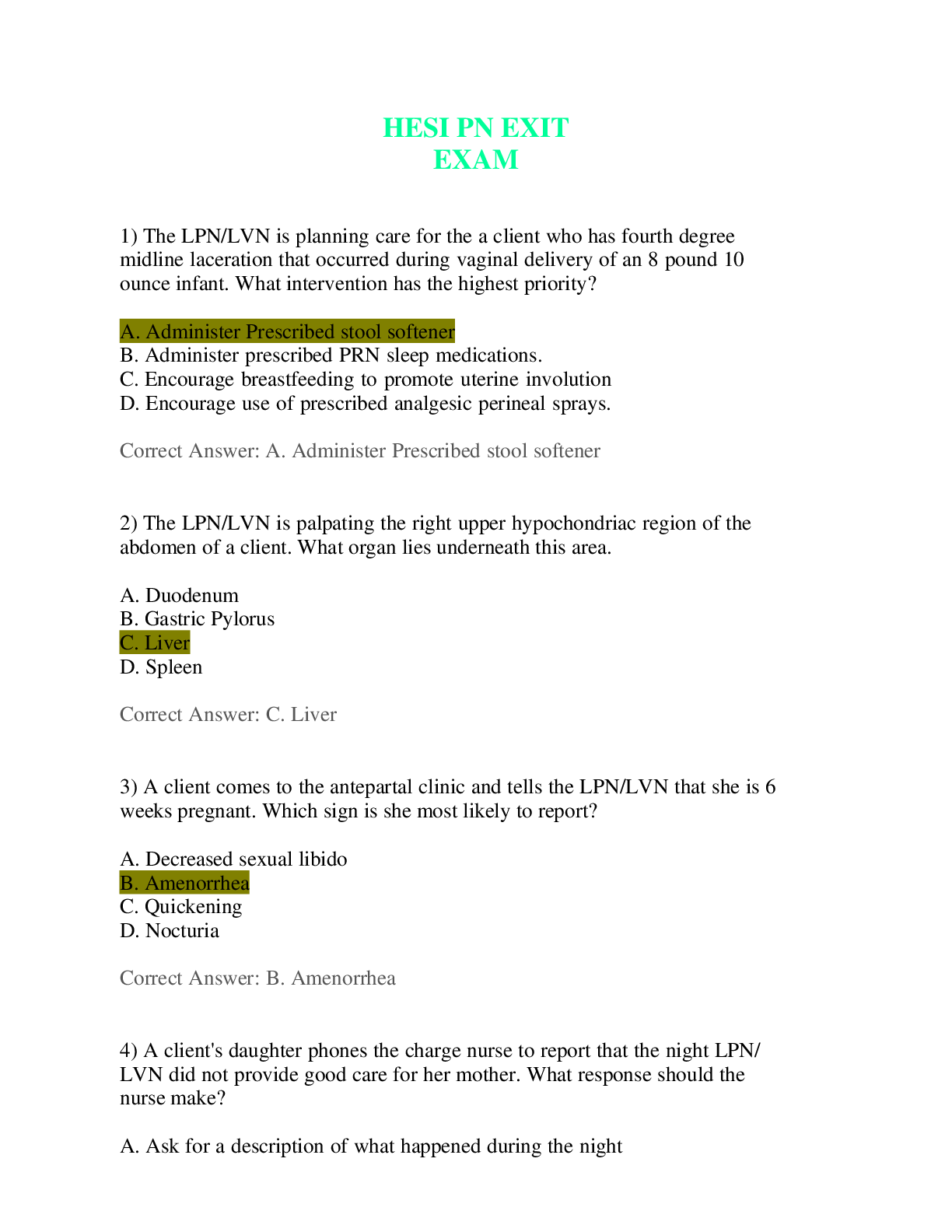
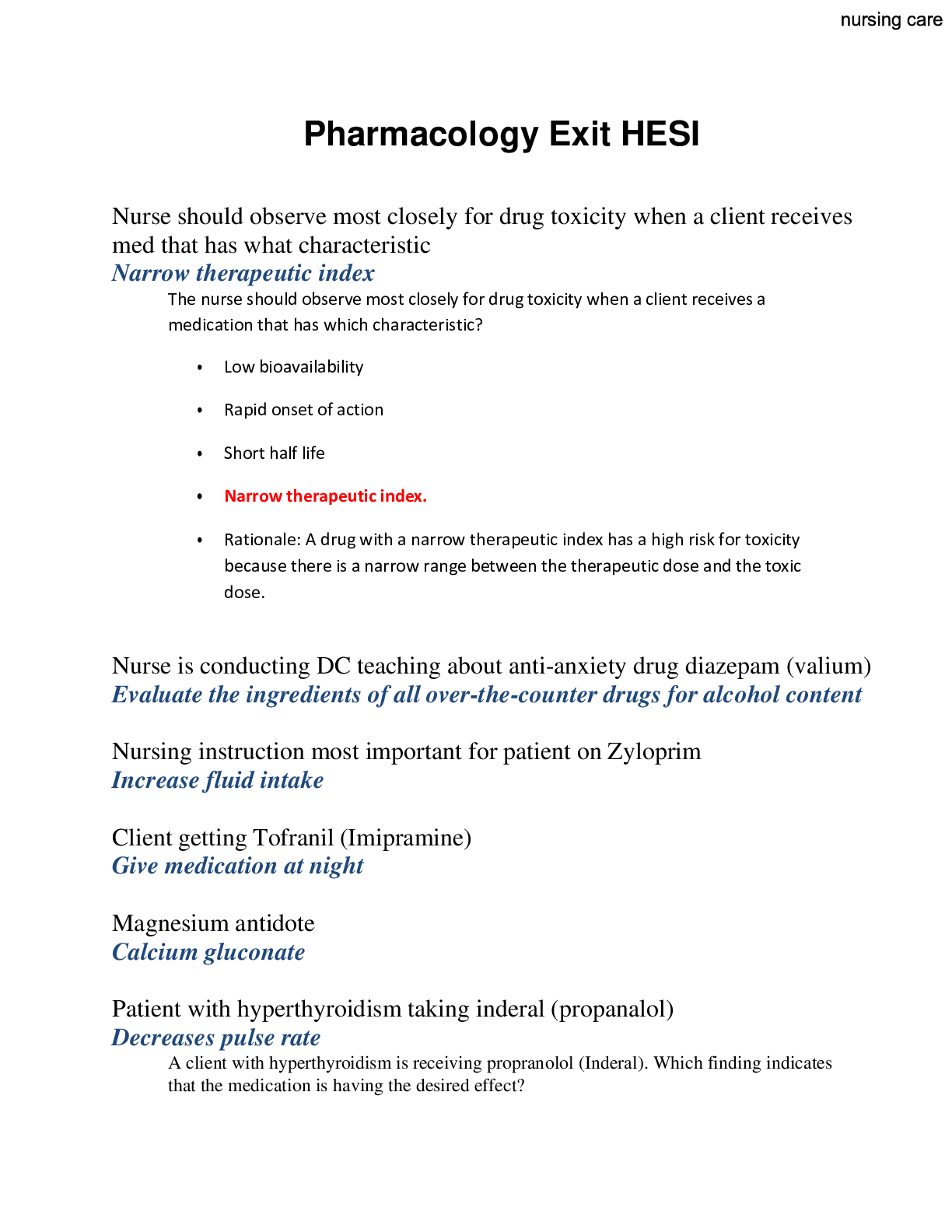

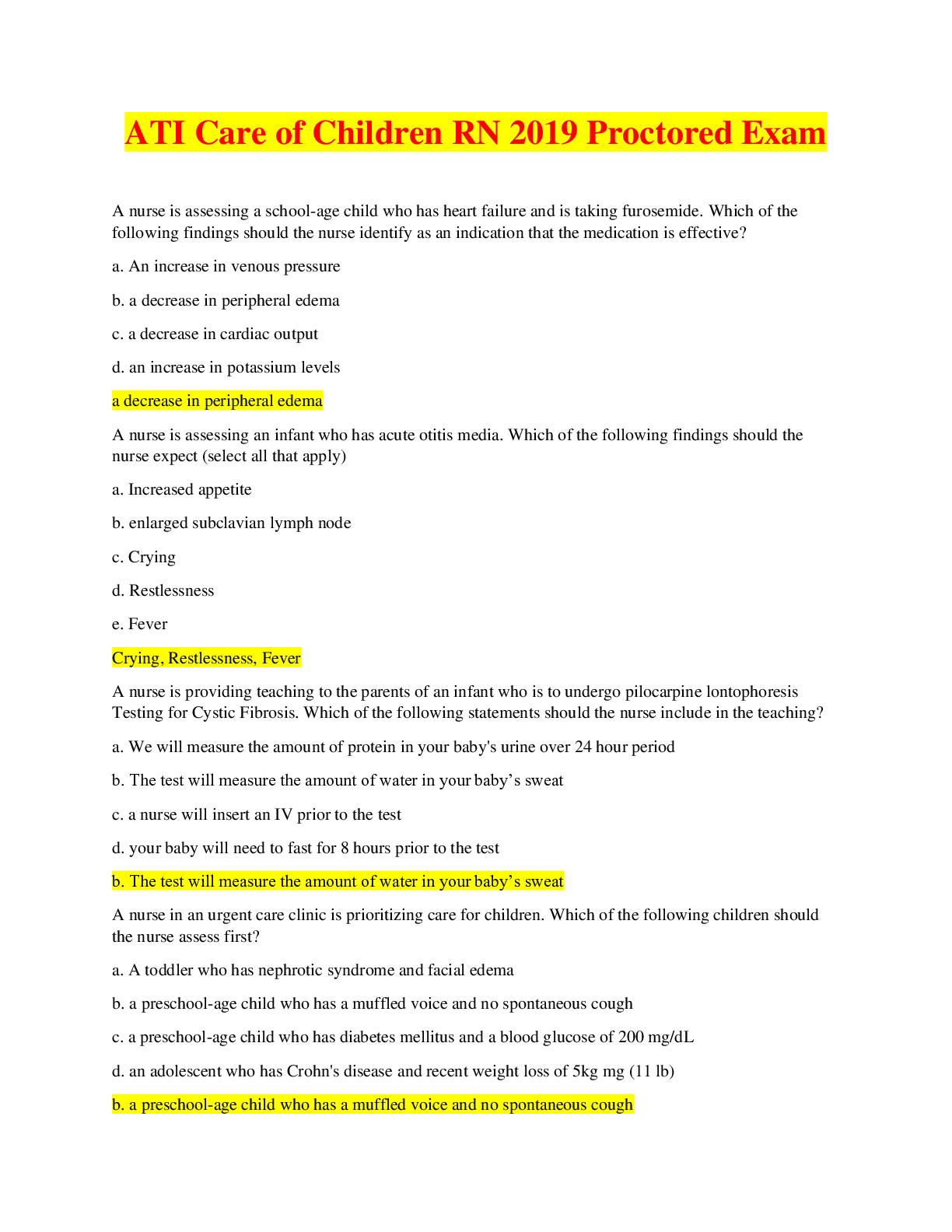

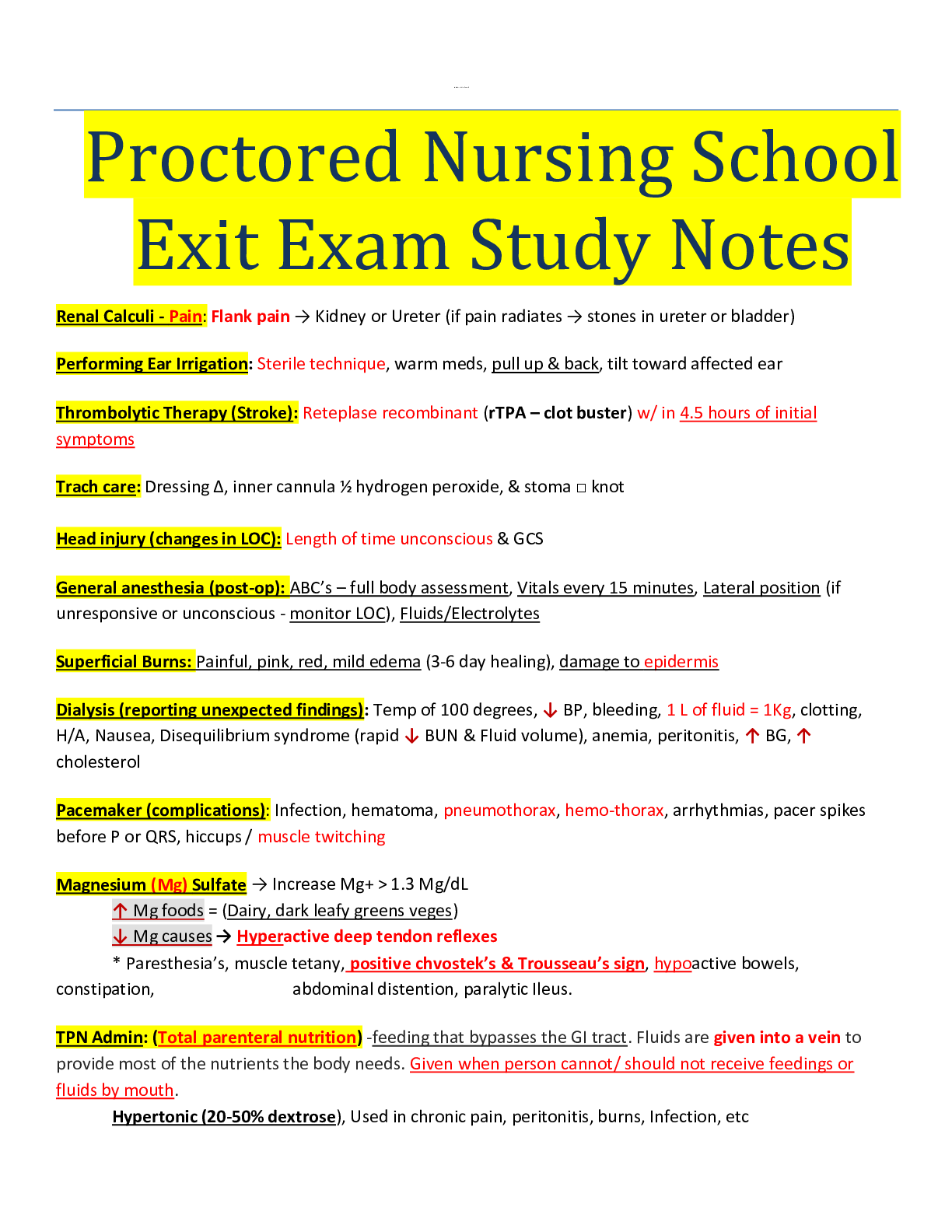


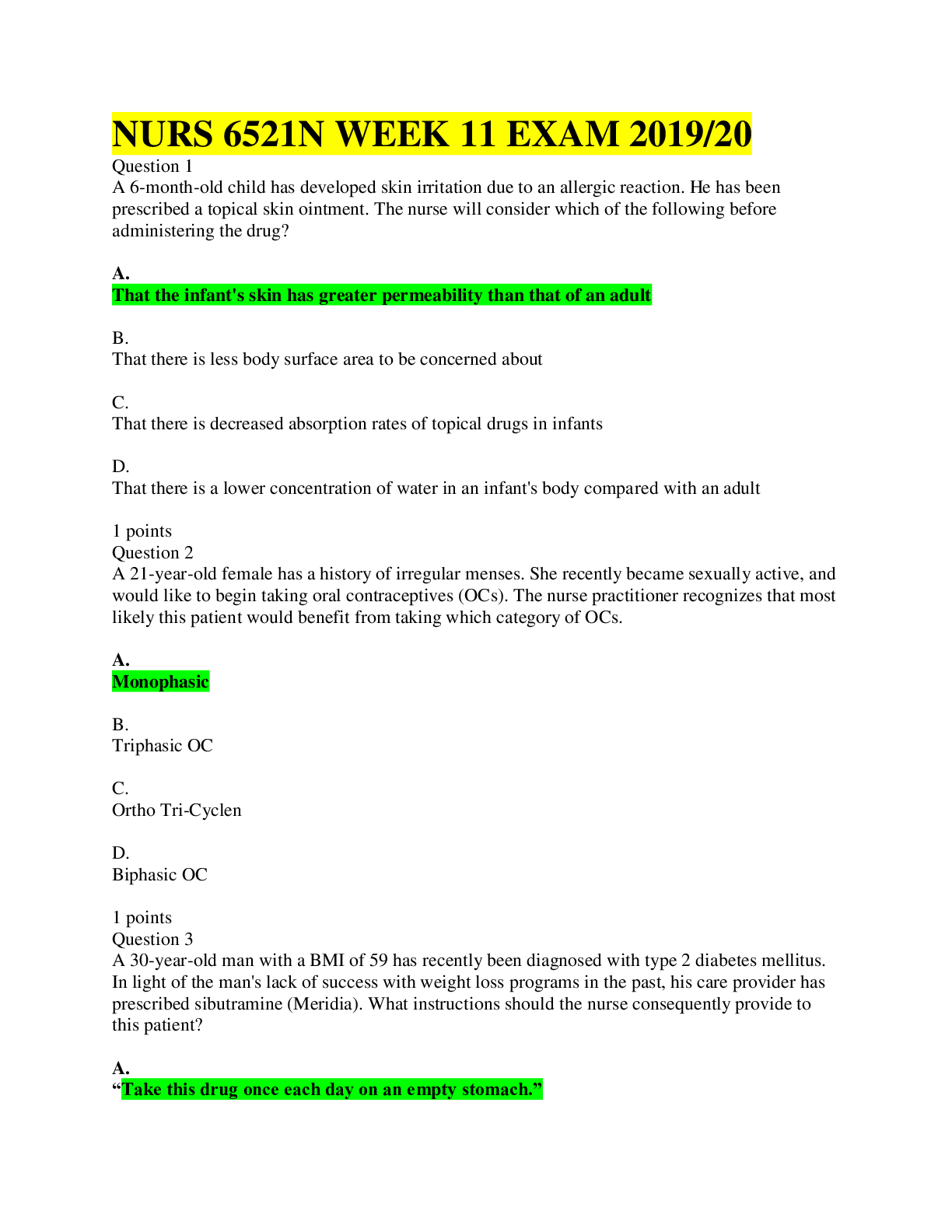
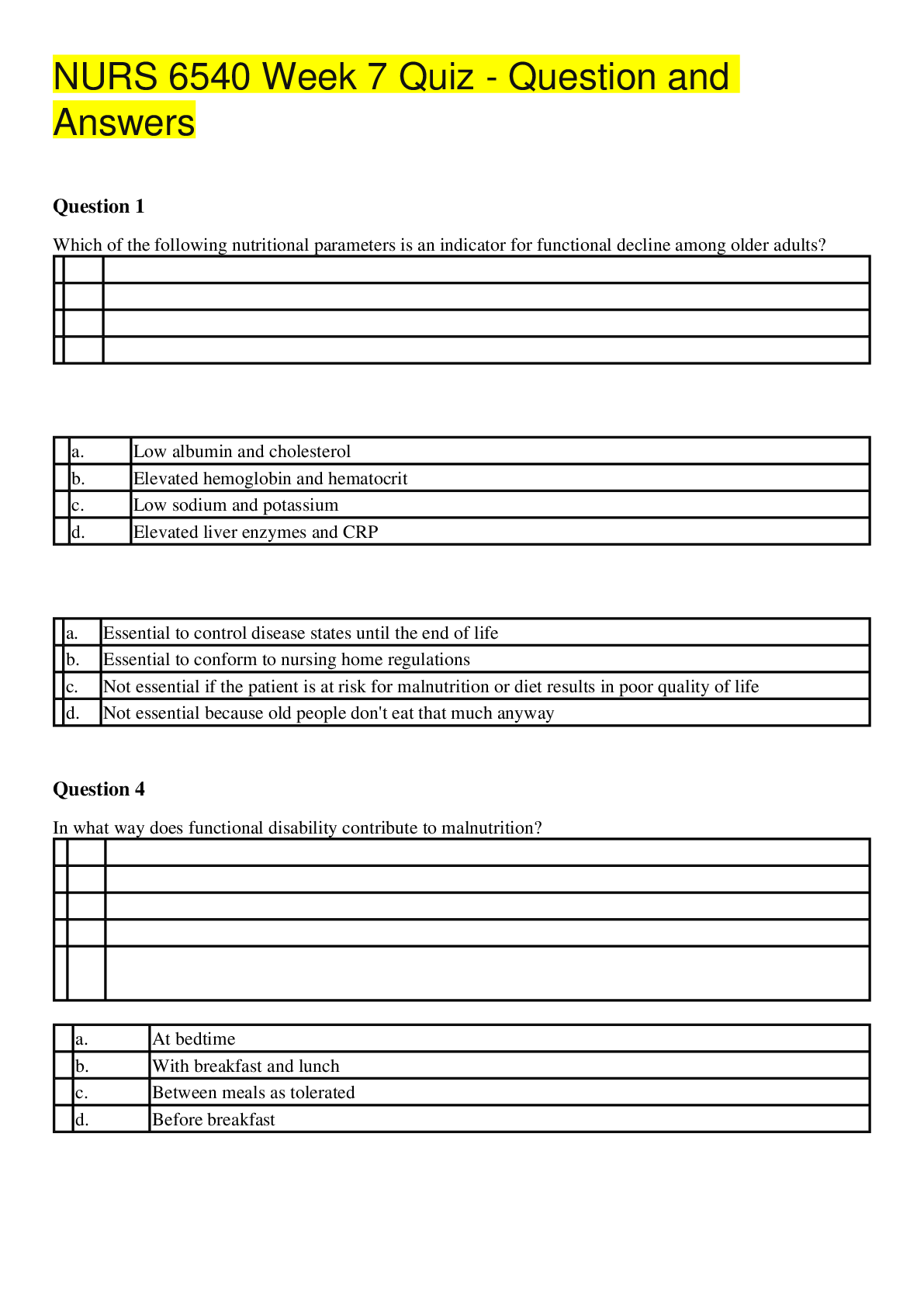




.png)
